There have been quite a few famous footballing siblings over the years. Immediately springing to mind are the likes of Bobby and Jack Charlton, both of whom were part of the 1966 World Cup-winning England team.
Another famous pair of brothers who have made significant contributions to football are the Yaya and Kolo Touré from Ivory Coast. Kolo gained prominence during his time at Arsenal, where he played a crucial role in the “Invincibles” season of 2003-2004 when they went unbeaten in the Premier League.
Meanwhile, Yaya made a name for himself as a powerful and dynamic midfielder. He played a pivotal role in Barcelona’s success under Pep Guardiola, helping the team secure numerous titles, including the UEFA Champions League. He later joined Manchester City, becoming a key figure in the club’s transformation into a footballing powerhouse.
Living up to an older sibling’s reputation in football can be challenging and daunting. The pressure to match or exceed the accomplishments of a successful brother creates a unique set of expectations and challenges for younger players.
There is undoubtedly scrutiny from fans, media, and even within the footballing community. The achievements of an older sibling may cast a long shadow, and any shortcomings or struggles of the younger player are often magnified in comparison.
In this tactical analysis and scout report, we will analyse Ethan Mbappé‘s abilities. Of course, the name leads us to think of older brother Kylian Mbappé, who has achieved incredible success, including winning the World Cup with Les Bleus and multiple domestic titles with Monaco and PSG.
Mbappé the younger is currently in the youth system at the Parisien giants and is putting in some good performances by all accounts. The 17-year-old primarily plays as a central midfielder and is on the fringes of the first team. In this analysis piece, we will identify what Ethan Mbappé brings to PSG u19s tactics and analyse whether we think he can step up into the senior squad.
The central driving force
First and foremost, a central midfielder often serves as the link between the defensive and attacking units of the team. Good ball progression involves having the skill to navigate through opposition players, either through dribbling or precise passing. By successfully advancing into the attacking third, Ethan Mbappé can create opportunities for the team to initiate attacking plays.
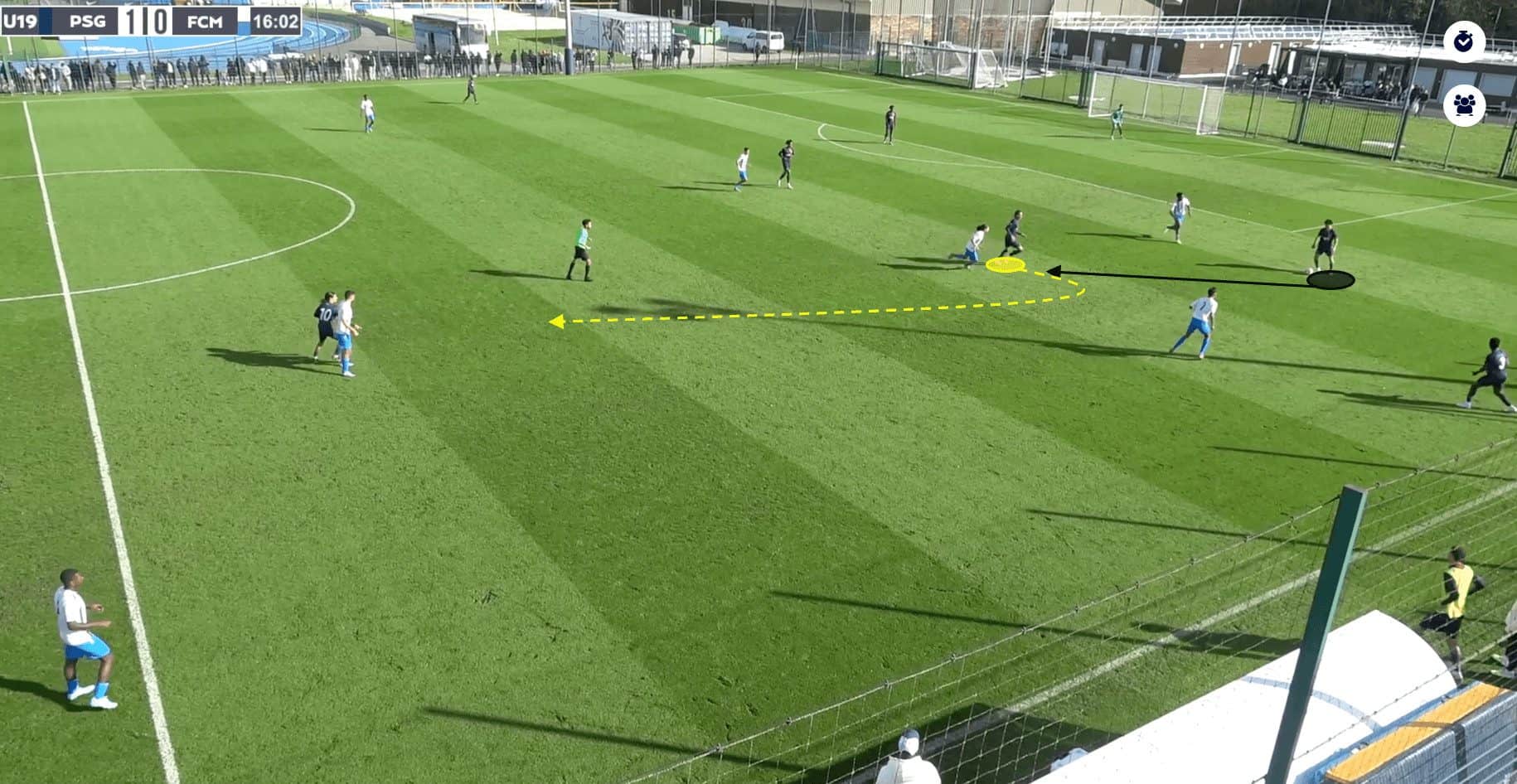
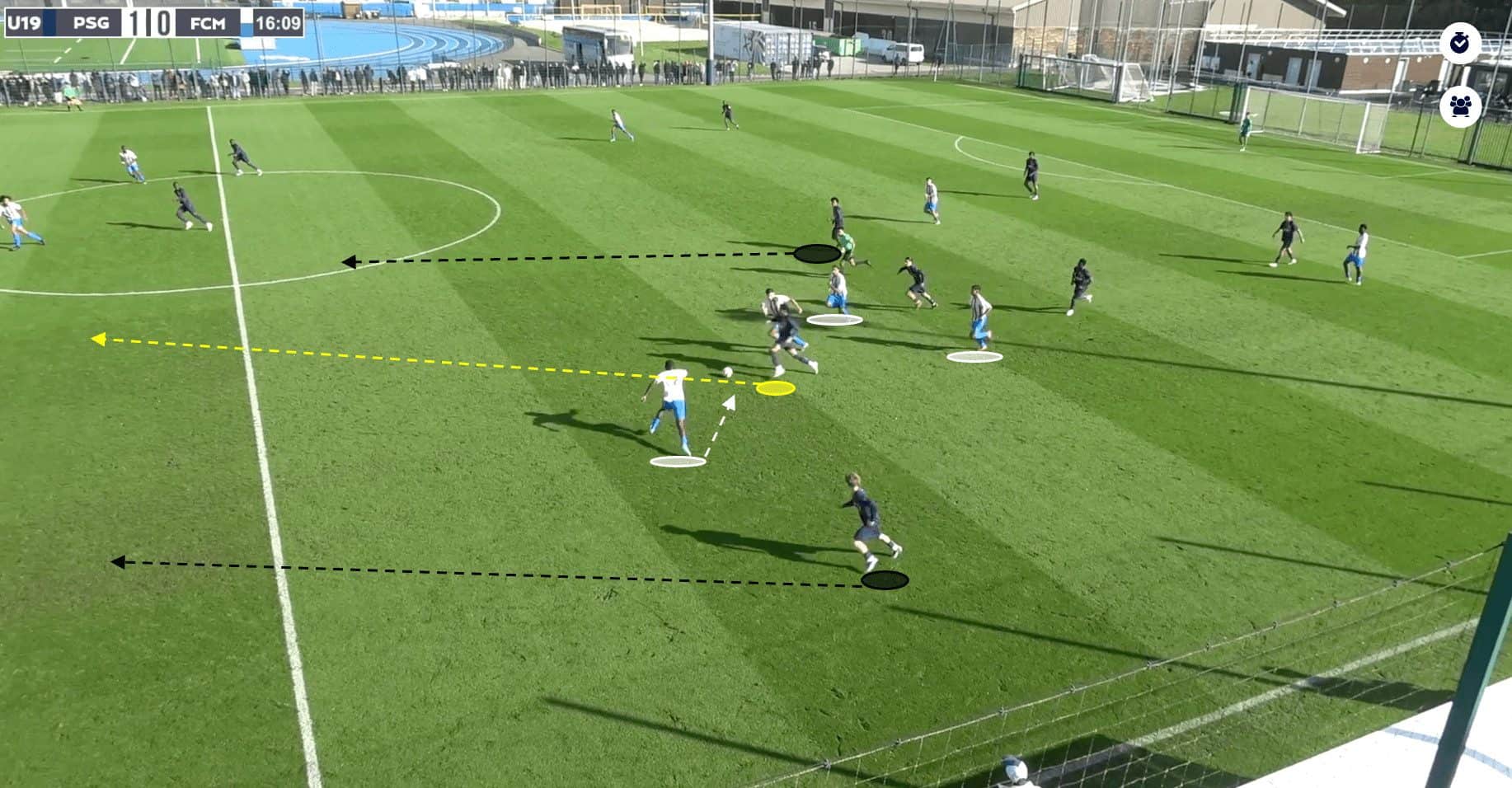
Mbappé is naturally a progressive player who always looks to be positive when in possession. As we can see here, he is comfortable dropping back into the defensive third to receive a pass from the defenders. The young midfielder is comfortable controlling the ball under pressure as he has an excellent first touch, which often affords him an extra second to make a good decision despite the opponent closing him down.
In this situation, Mbappé takes a touch and turns away from his opponent, deciding to carry the ball upfield as he has explosive pace which can carry him away from even the fastest of opponents. His ball-carrying ability draws the attention of four opponents, who all seek to stop him in his tracks. Consequently, this opens up space for other PSG players to make forward runs unchallenged as the opposition are so focused on Mbappé.
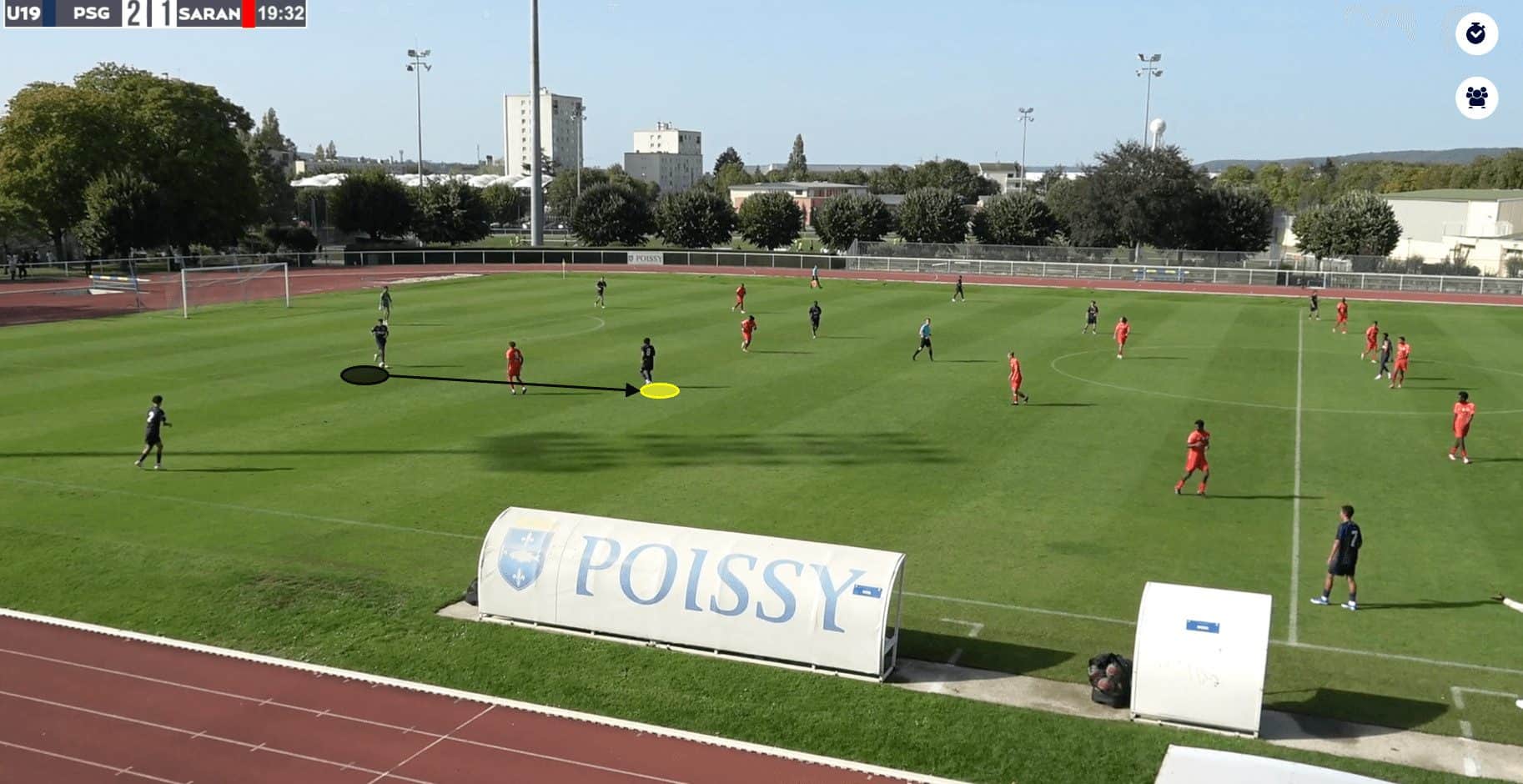
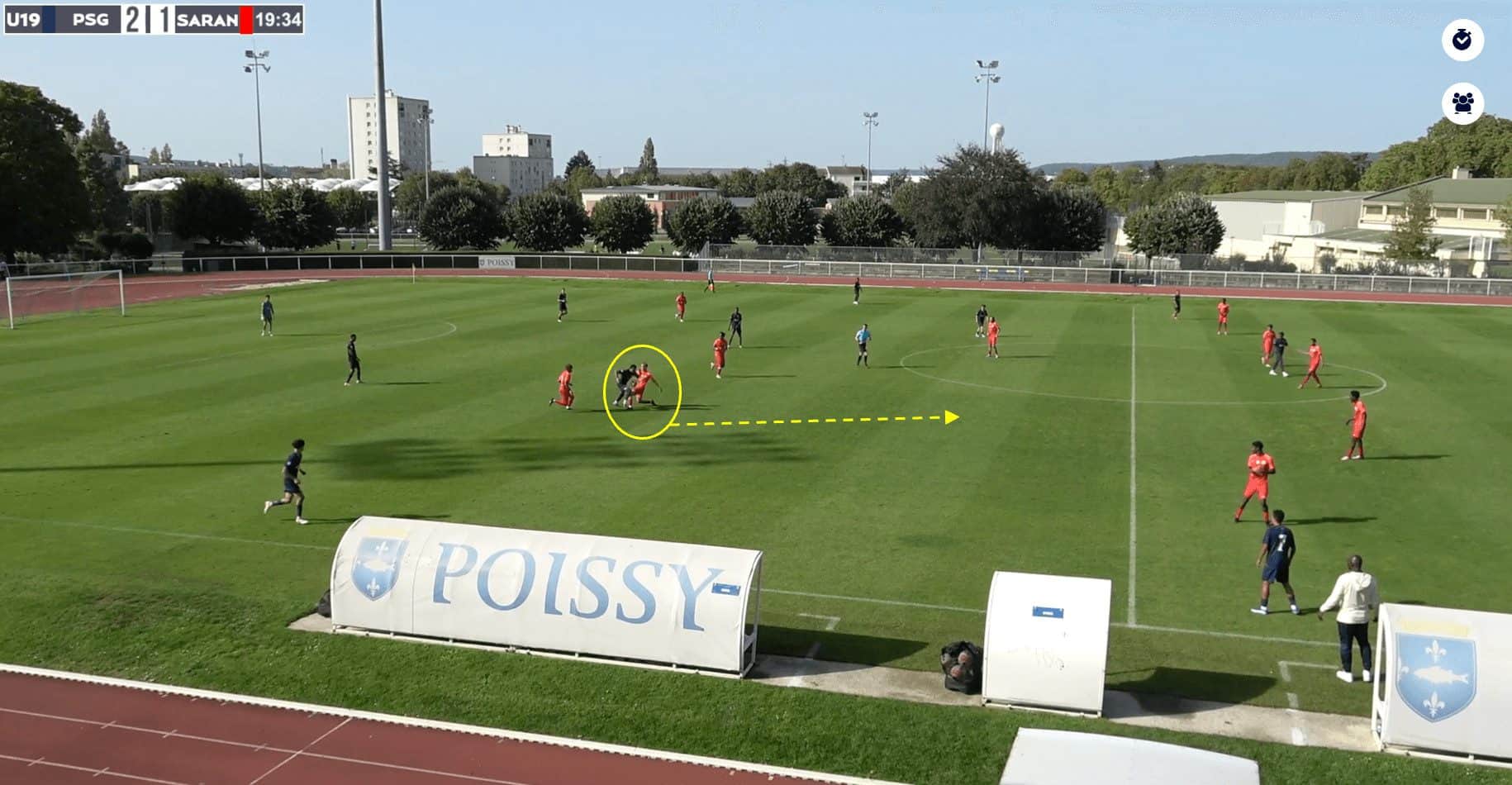
Furthermore, Mbappé averages 3.2 take-ons per 90, which he frequently puts to good use when looking to progress the play from central areas. In this instance, we can see that he has dropped back to receive the pass from his teammate. As Mbappé turns and carries the ball forward, the opposition player attempts to put in a tackle, but thanks to his close control and agility, the 17-year-old can successfully bypass the challenge and continue his run.
This ability allows the PSG youngster to progress the ball efficiently. By evading challenges and advancing into the attacking third, Mbappé can seamlessly transition the team from defence to attack. This not only relieves pressure on the defence but also sets the stage for quick and dynamic attacking plays.
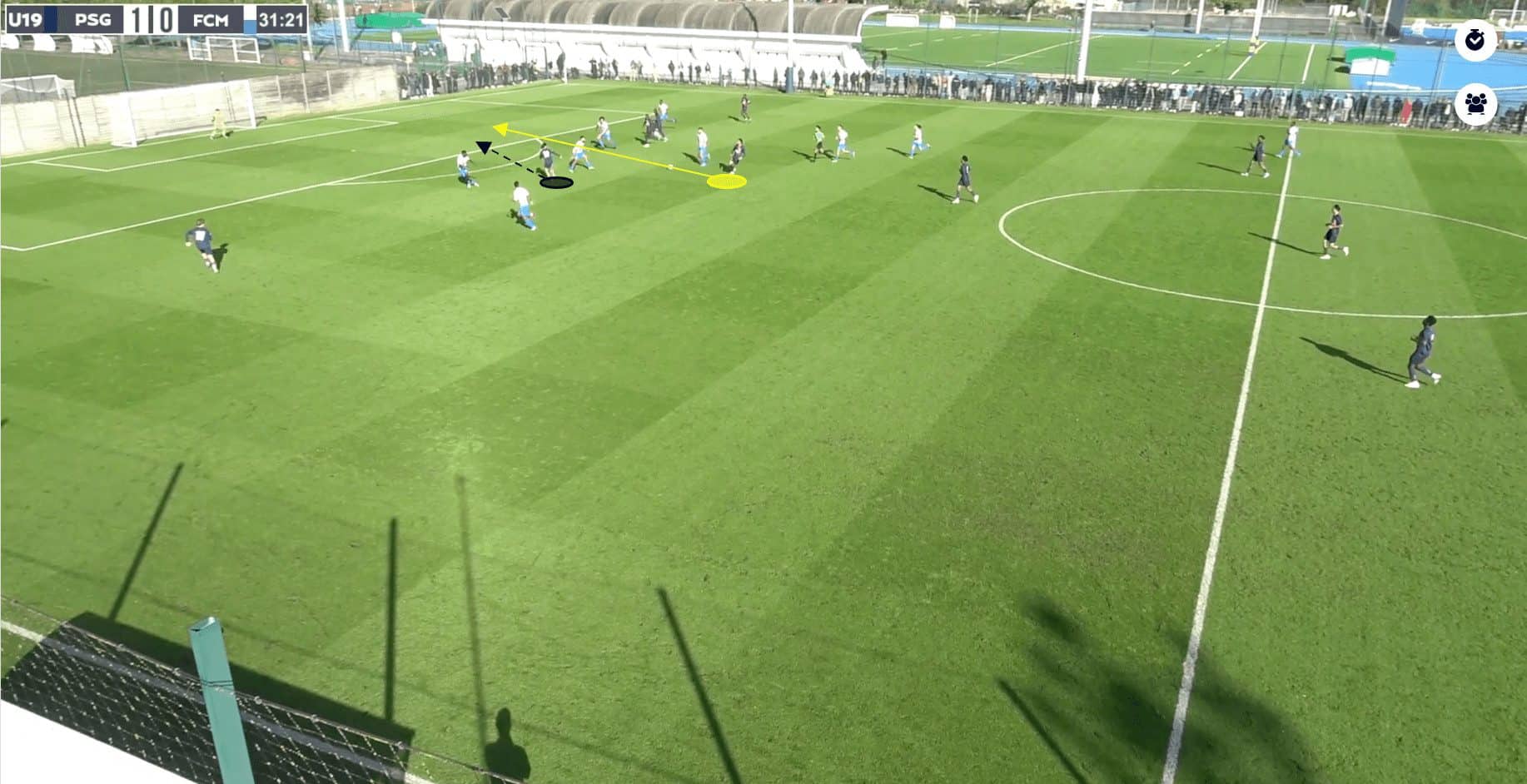
Moreover, a central midfielder’s role in playing passes into the penalty area is crucial for unlocking defensive structures and creating goal-scoring opportunities. This skill adds a layer of offensive dynamism to the team’s play, contributing significantly to their attacking prowess.
This is something that Mbappé does very well. A good example can be seen above, where he threads a well-timed pass through to a teammate, making a run into the penalty area. By delivering these precise passes into the penalty area, he becomes a key architect of goal-scoring chances.
Mbappé is able to pick out teammates in the box due to his vision and accuracy, allowing him to exploit spaces and defensive vulnerabilities. Averaging 1.11 key passes per 90, we can infer that Mbappé is very adept at carving out shooting opportunities for his teammates. Additionally, with an 87% pass accuracy, he is mostly reliable with his passing.
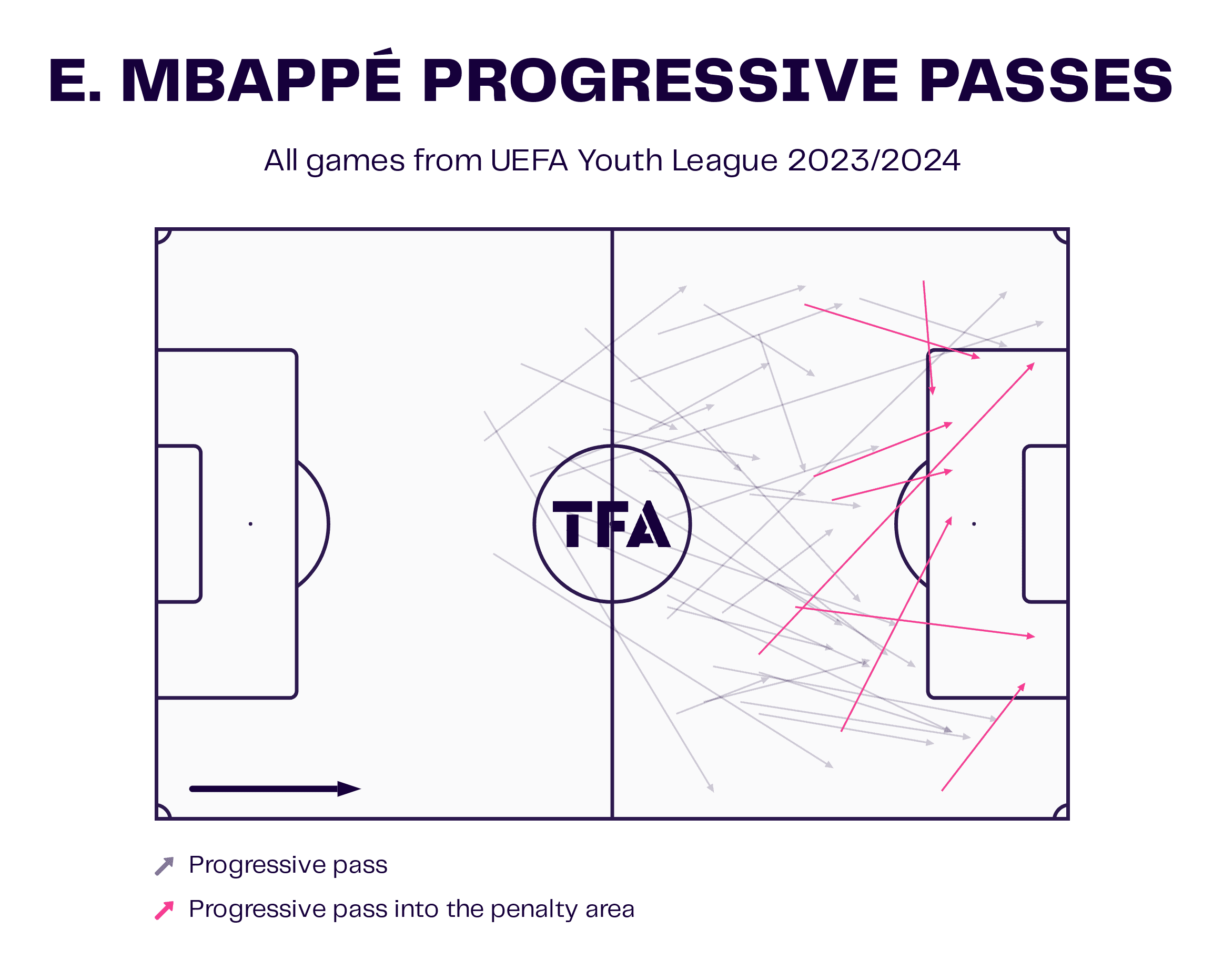
His progressive play has not just been on show in U19 league games; Mbappé has utilised his progressive passing during PSG’s UEFA Youth League games this season. The data visual above shows how he likes to play progressive passes into the wide areas and the penalty area. Plus, he is not afraid to play passes from the wide area into the box and averages 2.4 crosses per 90.
This means he can dictate the tempo of the game. By varying the types of passes—whether it’s a through ball, a cross, or a well-weighted chip—Mbappé can keep the opposition guessing and disrupt the defensive organisation. This strategic passing not only creates scoring opportunities but also controls the rhythm of the match.
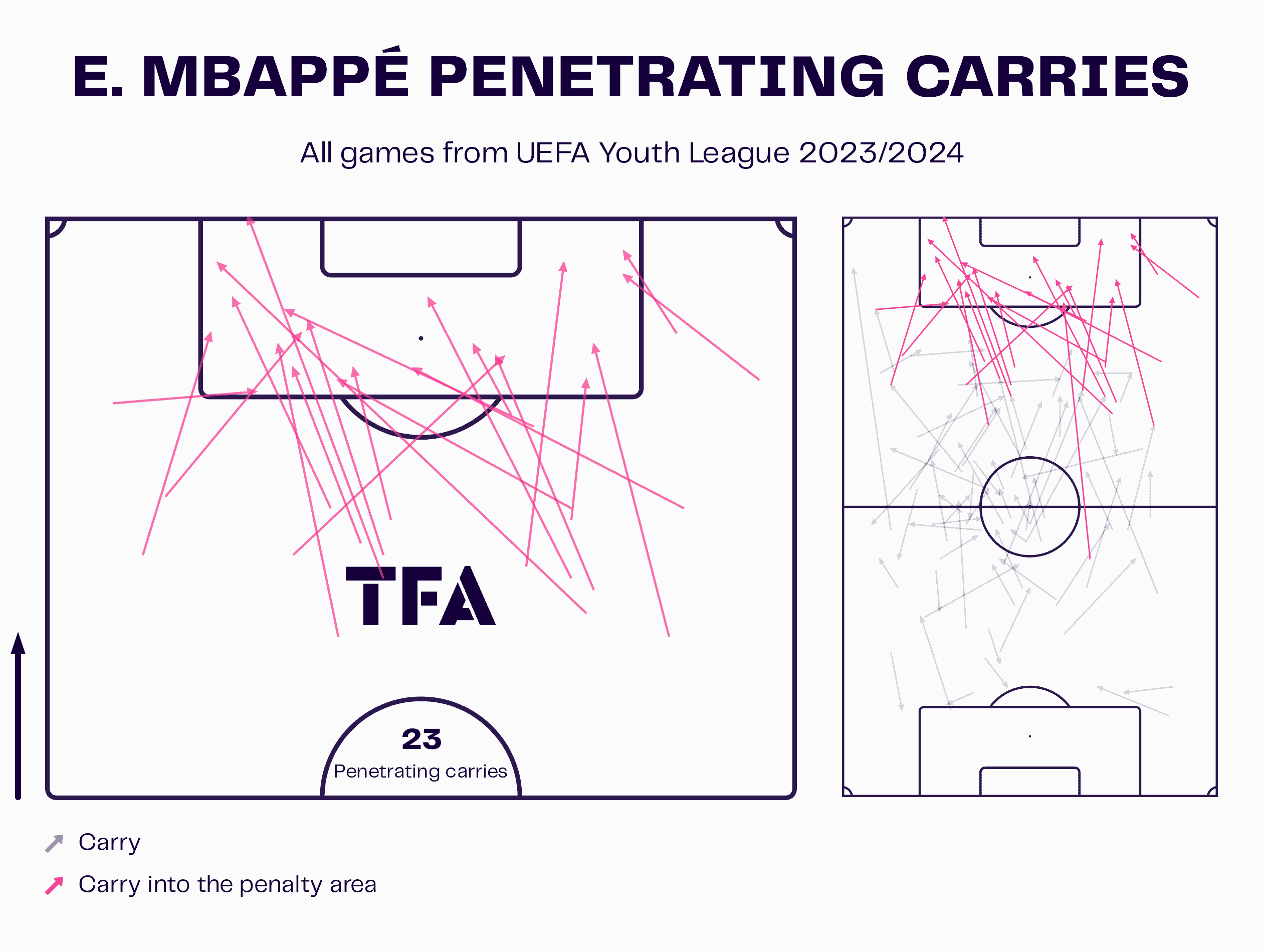
We have previously mentioned Mbappé’s ability to carry the ball from deep into more advanced positions. The 17-year-old is also equally adept at carrying the ball into the penalty area. The data visual shows us that he has executed 23 carries into the area during the 2023/24 Youth League.
Mbappé adds a dynamic dimension to the team’s attacking play. His willingness to drive into the opposition area is instrumental in breaking down defences and creating goal-scoring opportunities in tight spaces.
When he carries the ball into the penalty area, he instantly becomes a direct threat to the opposing defence. By bypassing defensive lines and penetrating into the critical area he forces defenders to engage which creates openings for teammates or draws fouls that lead to set-piece opportunities.
Additionally, in situations where passing lanes are limited, or defenders are marking tightly, the young central midfielder’s ability to dribble through challenges adds a layer of creativity. This unpredictability can catch defenders off guard, opening up space and presenting goal-scoring chances. This skill is especially valuable when the team is looking to break down a compact defence or exploit gaps in the defensive line.
Long shots
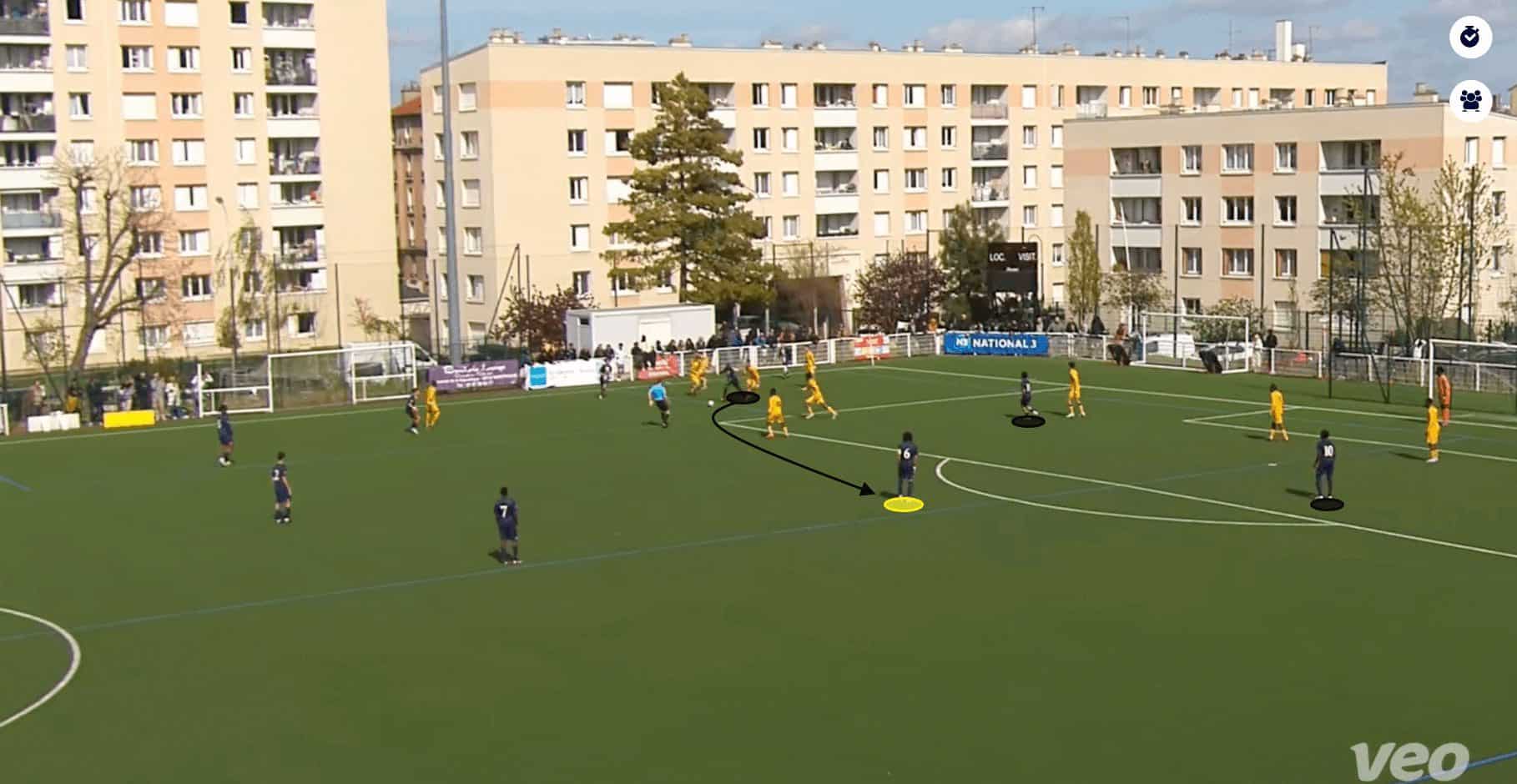

Mbappé averages 1.75 shots per 90, with 1.35 per 90 being from outside the opposition penalty area. The young PSG midfielder enjoys hitting a long shot. Some of these stem from set pieces where he is the primary taker for PSG U19. Others are from open play situations, which we will look at in this section.
We can see in this example that he positions himself well on the edge of the area. With the opposition drawn to the player in possession, Mbappé has an abundance of space to set himself. As the ball is played into him, he opts for a first-time shot on his favoured left foot. On this occasion, it is just wide but it shows how he is unafraid to shoot from distance.
Plus, Mbappé’s ability to take long shots adds an element of unpredictability to his play. By posing a threat from a distance, the midfielder can force opposing defenders to close down space, therefore creating opportunities for other attacking players. This can disrupt defensive formations, making it more challenging for opponents to anticipate and counter the PSG central midfielder’s actions.
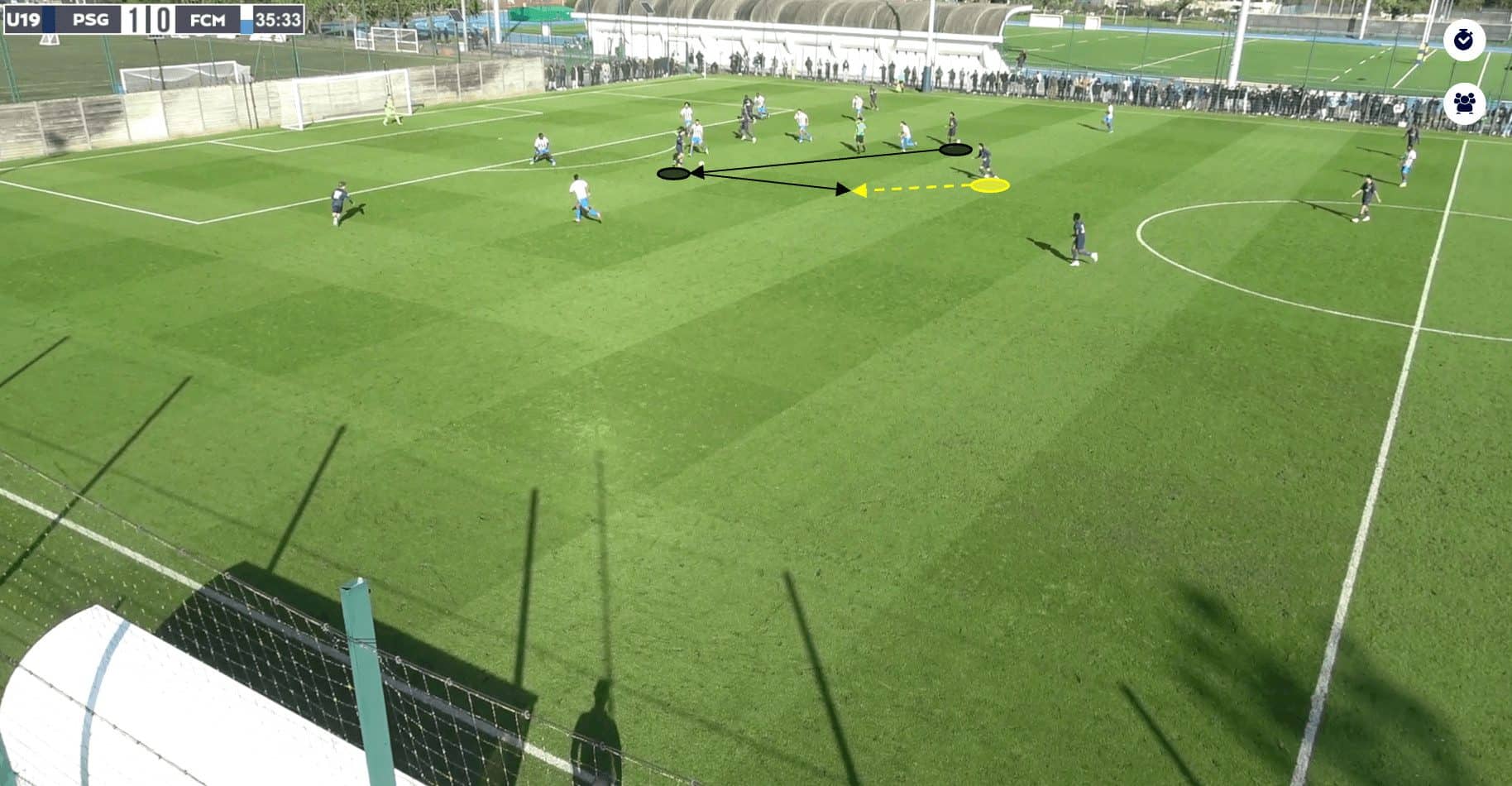
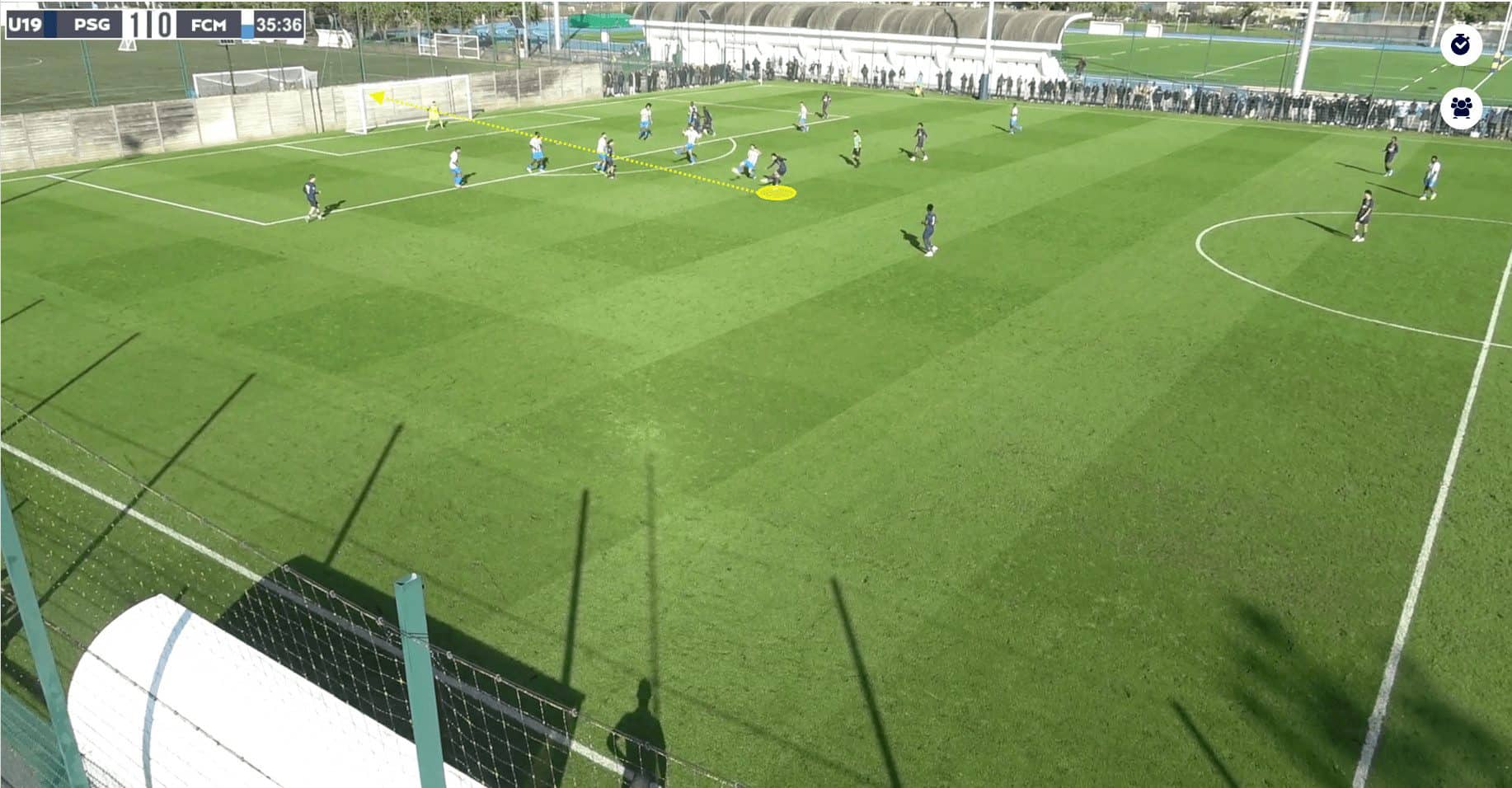
Additionally, this also introduces an additional avenue for goal-scoring opportunities. When the path to the penalty area is congested, or defenders are tightly marking attacking players, a well-timed and accurate long shot can catch goalkeepers off guard, resulting in spectacular goals.
Mbappé’s capability provides the team with an alternative method of breaking down resilient defences and scoring crucial goals, especially in tightly contested matches. We can see here that PSG are building up an attack but the opposition are quite compact and have the passing lanes covered. This encourages Mbappé to hit a long shot once he receives the ball from his teammate.
Moreover, taking long shots can be an effective tool in stretching the opposition’s defensive block. A central midfielder who poses a genuine threat from long distance compels defenders to close them down quickly, potentially creating spaces in behind for other attackers.
This stretching of the defensive unit can open up passing lanes, offering more options for creative play in the final third. Mbappé’s willingness to hit shots from distance is a good way of drawing the opposition out of their defensive structure in a bid to nullify his threat. This is what can lead to passing lanes opening up and otherwise compact defensive structures becoming easier to break through.
Rapid recoveries
The need for a midfielder to swiftly track back and make recoveries is important for maintaining defensive solidity and transitioning effectively between the attacking and defensive phases of play. This responsibility ensures that Mbappé plays a key role in regaining possession in critical areas of the pitch.
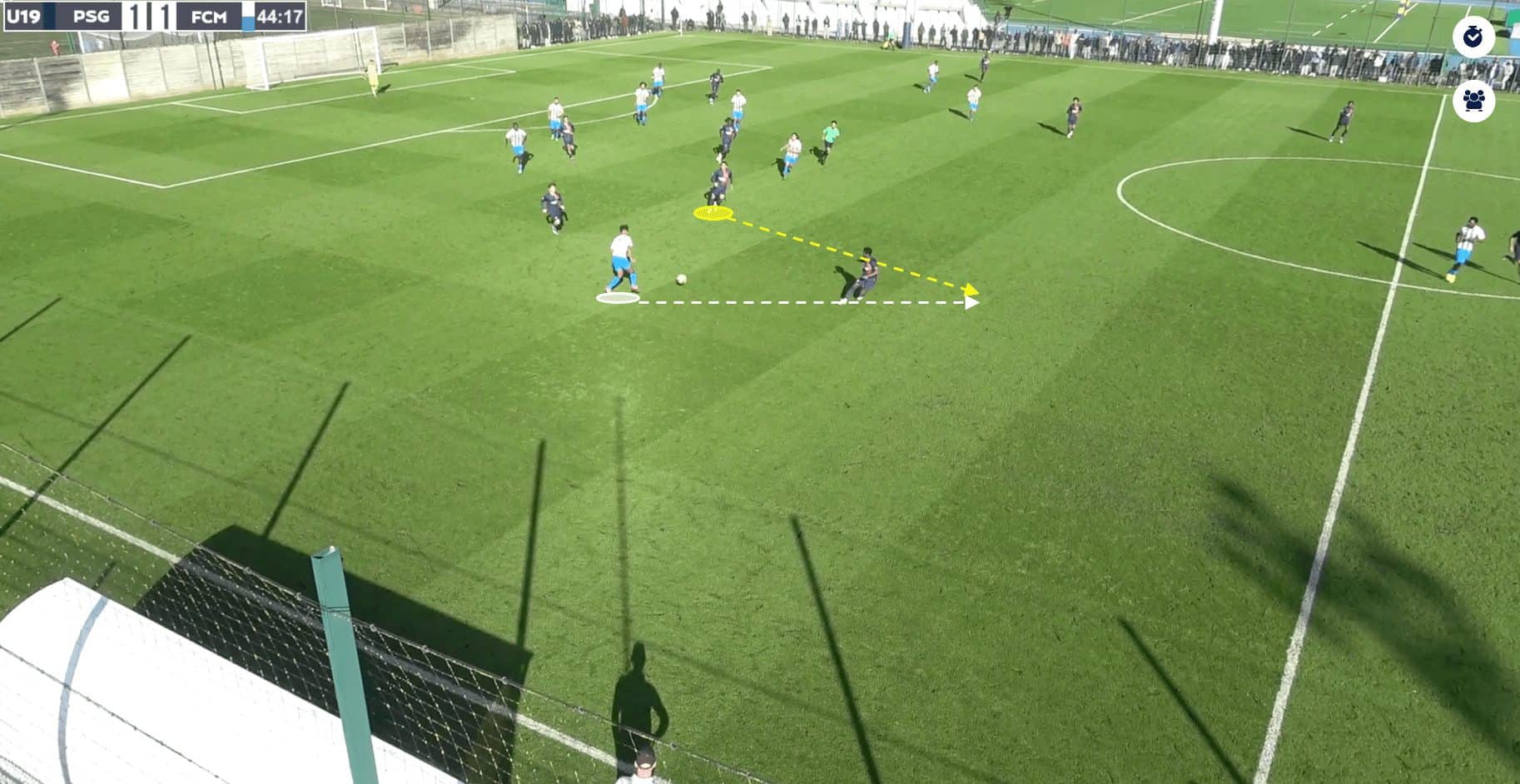
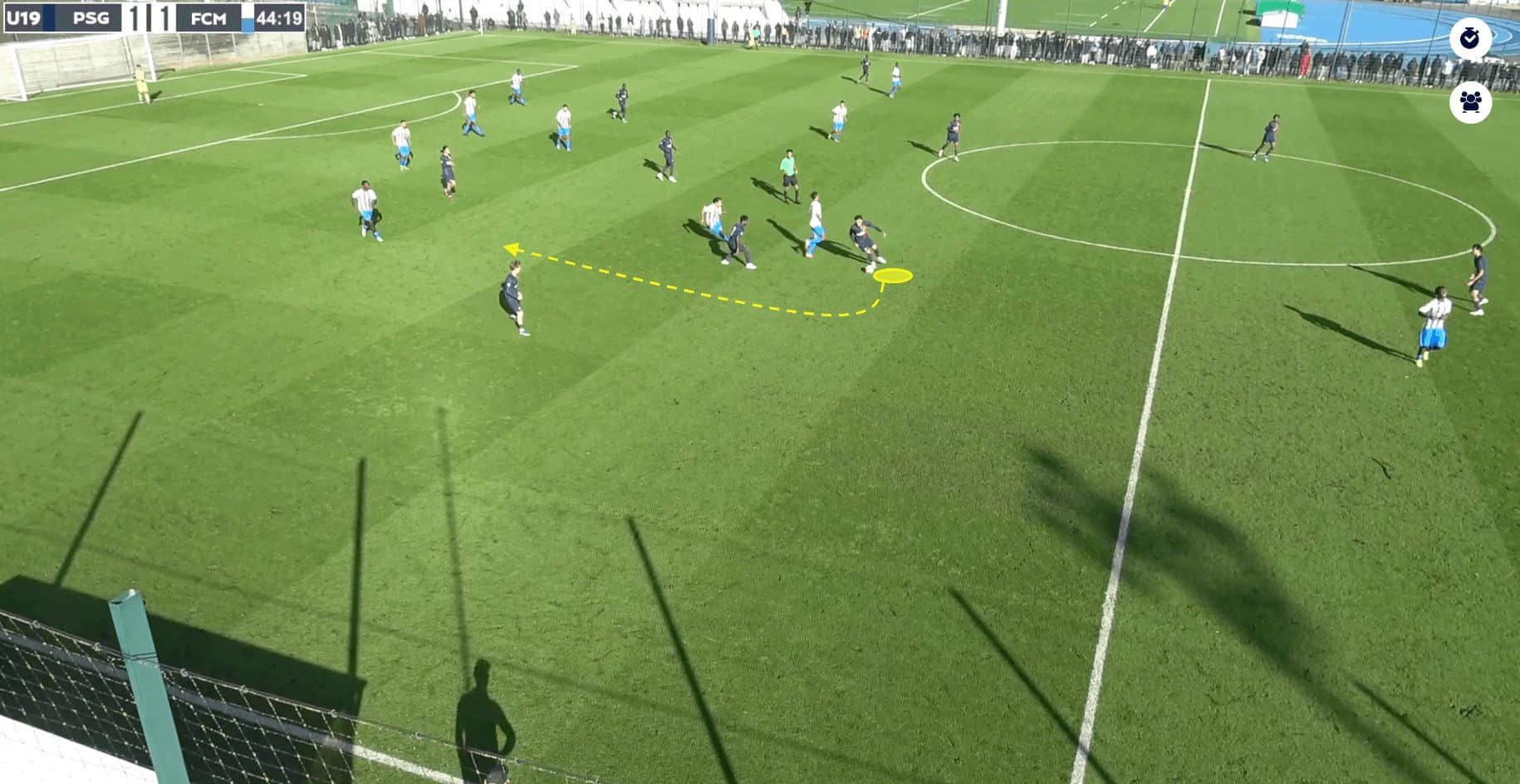
In this instance, PSG loses possession in the attacking third, and their opponents look to launch a counterattack quickly. To his credit, Mbappé is the first to react and promptly uses his electric speed to sprint back and engage in a ground duel with the opponent. At 176cm tall, he is not the tallest player, but he knows how to use his physical presence well.
He manoeuvres himself between the opponent and the ball and quickly regains possession. Once again, using his speed, he quickly turns away and carries the ball upfield, meaning PSG are back on the attack in a matter of seconds since they initially lost possession. This tenacity and work ethic shows in the fact that Mbappé averages 5.7 ball recoveries per 90.
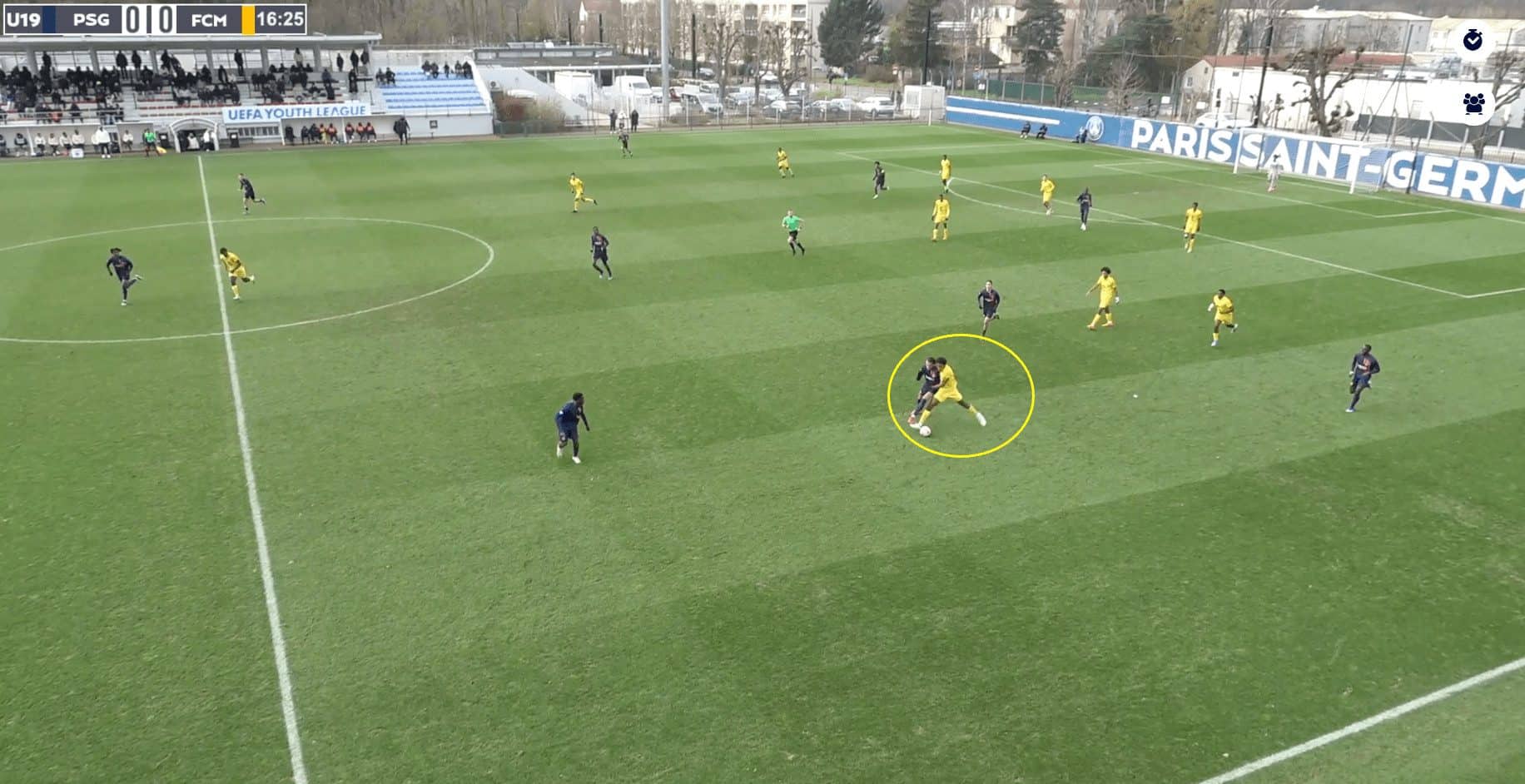
In this scenario, a similar sequence of events plays out. As we can see, Mbappé does just enough to stop the opposition’s counterattack by using his strength to outmuscle the opponent. The 17-year-old’s rapid tracking back is essential for preventing counterattacks. When the team loses possession, especially in advanced areas, his ability to quickly disrupt the opposition’s progress can be pivotal.
By closing down spaces and applying pressure, Mbappé minimises the risk of the opposition exploiting gaps left behind, helping to thwart potential counterattacking opportunities. His defensive outputs also include an average of 1.51 ground duels per 90 and 4.4 tackles per 90, which shows his willingness to put in the defensive work required.

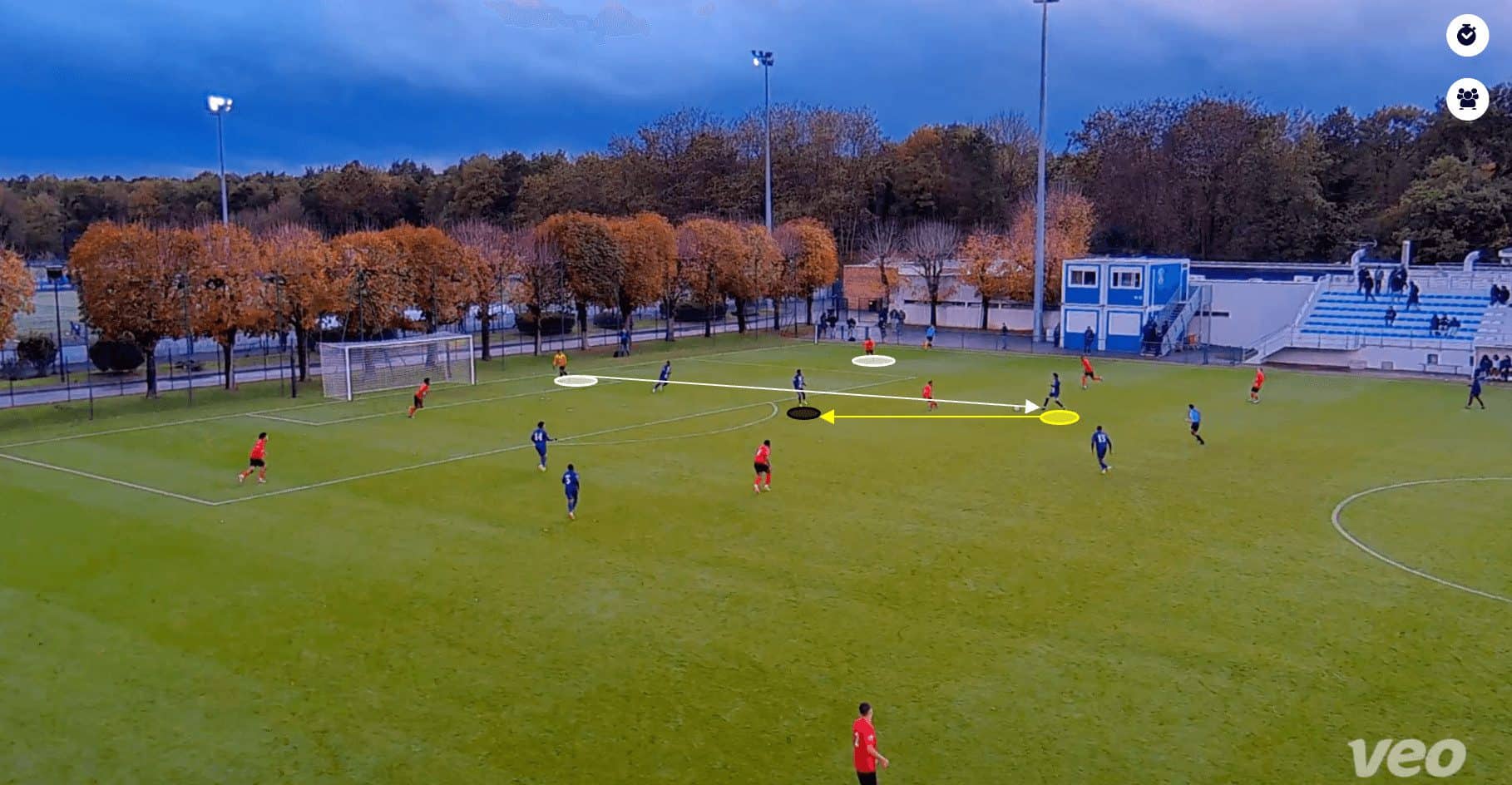
Furthermore, Mbappé positions himself well when PSG u19s are looking to press high and force a turnover. We can see here that the opposition are attempting to play out from the back. Their goalkeeper exchanges passes with the defender, and as a result, the PSG attackers put the press into action.
There are two attackers strategically positioned to not only put the goalkeeper under pressure but to also close off passing lanes to two of his teammates. Consequently, the ‘keeper feels that he has no choice but to hit it over the PSG attackers and look for a teammate. However, Ethan Mbappé is on hand to intercept the pass before any of the opponents can reach the ball. He then calmly plays it into the feet of his teammate, who is in an excellent position to turn and shoot.
By actively positioning himself to intercept or block passing lanes, Mbappé directly influences the opponent’s decision-making during the buildup phase. He can read the play, anticipate passes, and effectively cut off options for the team attempting to play out from the back. In doing so, he becomes a defensive barrier that limits the opposition’s ability to progress the ball smoothly through the central areas of the pitch.
Additionally, this contributes significantly to PSG’s ball recovery in advanced positions. Intercepting a pass or blocking a potential route forces turnovers in crucial areas, giving the team an immediate offensive advantage, as shown above. This defensive prowess not only disrupts the opponent’s intended buildup but also creates opportunities for quick transitions and counterattacks.
Conclusion
In this scout report, we have looked at some of the critical aspects of Ethan Mbappé’s game and how PSG U19s look to use this in their tactical system. We have seen how he is something of a driving force when the team look to progress the play through central areas. We have seen how his willingness to shoot from distance can be an advantage in certain situations and highlighted the 17-year-old’s impressive work ethic in defensive situations.
Whilst the name ‘Mbappé’ may lead our minds to immediately think of Kylian, it has to be acknowledged that Ethan is a good player in his own right. Whether he has the ability to reach the heights of his older brother is debatable, but based on his performances in PSG’s U19s, he looks to be an exciting central midfield prospect.





Comments